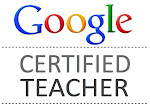Nonno is Ben's grandfather who lives in Italy. He is a guest blogger. Check out his "Where's Nonno?" series in our archive!
Nonno is going back to Courmayeur after his visit to Florida and California. Nonno wants to leave you this story about Rhémy de Noël, il Babbo Natale di Courmayeur (The Father Christmas of Courmayeur)
This is a story about Father Christmas in Courmayeur. It is a tale based upon folk stories and stories people in the mountains tell about the magic of Christmas in Courmayeur.
Rhémy de Noel is the Father Christmas of Courmayeur, our village at the base of Mt. Blanc, (Monte Bianco) the tallest mountain in western Europe. Its elevation is 15,782 feet. (4,810.45 m)
Rhemy de Noel is a Father Christmas who talks about the issues of today such as the environment. His story begins at the time when there was less snow in Courmayeur. Rhemy decides to go face the unknown to find out what happened to the snow.
 |
| Ben in the Summer Waiting for Snow |
Rhemy and his courageous, loyal friends, help him get where no one has arrived before, on top of Mont Blanc. Up there, Rhemy meets a giant at the giant's tooth, who, for reasons that Rhemy discovers, has imprisoned the snow.
The story is in Italian so we will have to wait for Francesca to tell us how it ends. But it is a story that should fill the dreams and imagination of people of all ages. This year Christmas in Courmayeur has a very special visit based on the story of Rhemy de Noel, Father Christmas and Mont Blanc/Monte Bianco.
For many years Father Christmas, passed in a sleigh through the streets of Courmayeur handing out sweets to kids and adults. Then he stopped his visits. Since then, letters to Father Christmas continued to arrive in Courmayeur from all over Italy from people who continued writing to the Father Christmas they had met on the streets of Courmayeur.
The highlight of the Christmas season will be the day Rhemy de Noel, returns to our village so he can meet his friends large and small.
And in the meantime, those who want to can post a message to Rhemy de' Noel, the Father Christmas of Mont Blanc in the special mail box for Rhemy situated near the Jardin de l'Ange on the via Roma, or send by mail to:
 |
| See Rhemy Pointing To His Mailbox |
Rhemy de Noel,
Father Christmas in Courmayeur
Viale Monte Bianco -
11013 Courmayeur - Valle d'Aosta
Italy
Thank you, Nonno, for a wonderful holiday folktale!
Which Where's Nonno? post is your favorite and why?
Merry Christmas, Nonno and Francesca!





































































